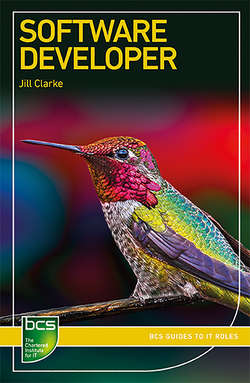Читать книгу Software Developer - Jill Clarke - Страница 7
На сайте Литреса книга снята с продажи.
LIST OF FIGURES AND TABLES
ОглавлениеFigure 1.1 Context for the different aspects that contribute to capability
Figure 2.1 Software or system life cycle
Figure 2.2 Waterfall life cycle
Figure 2.3 Additional, post-production stages in a Waterfall life cycle
Figure 2.4 Modernised Waterfall life cycle
Figure 2.5 Agile Scrum framework at a glance
Figure 2.6 An example Scrum board
Figure 3.1 An example of data used as input to control actions or processes
Figure 3.2 An example of data used as output in some form of information
Figure 3.3 An example of data used for input and output with data transformation
Figure 3.4 Simple ERD showing customer and order
Figure 3.5 Simple ERD showing customer and order with relationship symbols
Figure 3.6 Simple entity attribute diagram
Figure 3.7 UML use case symbols
Figure 3.8 UML use case for an ATM
Figure 3.9 Overview of testing in development
Figure 4.1 Object oriented: a few of the methods and properties for an order
Figure 4.2 Window methods and properties
Figure 5.1 Continuous integration
Figure 5.2 Continuous deployment
Figure 6.1 SFIA responsibility levels (with reference to certification levels and BCS membership)
Figure A.1 Book road map
Figure A.2 Developer role from SFIA
Figure A.3 Types of development summary
Figure A.4 Developer participation in Waterfall SDLC; typically in the build and support stages
Figure A.5 Developer participation in Agile/Scrum; typically as part of the development team
Figure A.6 Developers’ key knowledge and skills
Table 3.1 An example of entity relationship descriptions
Table 3.2 Casual text description for a use case
Table 3.3 User story example
Table 3.4 Description of key testing types that can be run on software
